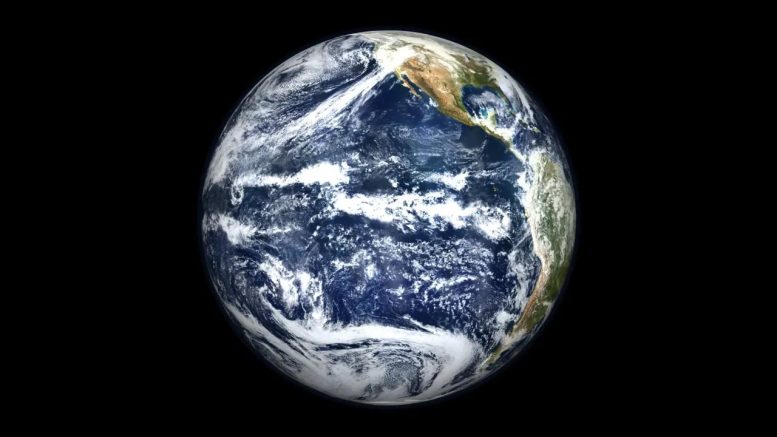[ad_1]
NASA has selected four proposals for conceptual studies through its Earth System Explorers program, targeting key areas such as greenhouse gases, the ozone layer, ocean currents and ice changes. Each proposal will receive $5 million for a one-year study, and NASA will select two for further development, with the goal of launching in 2030 and 2032. These missions will be based on NASA’s extensive observations of Earth, contributing to a better understanding of our planet’s system changes.
OURThe Earth System Explorers program selected four proposals to study greenhouse gases, the ozone layer, ocean currents and ice changes. Each will receive $5 million for a one-year study before NASA selects two for future launches.
NASA has selected four proposals for mission concept studies to help us better understand key areas of Earth science for the benefit of all, including greenhouse gases, the ozone layer, ocean surface currents, and changes in ice and glaciers around the world.
The four surveys are part of the agency’s new Earth System Explorers program, which conducts space science missions led by principal investigators as recommended by the National Academies of Sciences, Engineering, and Medicine’s 2017 Decadal Survey on Earth sciences and their applications from space. The program is designed to enable high-quality Earth system science to focus on previously identified key objectives. For this set of missions, NASA is prioritizing greenhouse gases among its visible targets.
Facing climate challenges
“These proposals represent another example of NASA’s holistic approach to the study of our home planet,” said Nicky Fox, associate administrator for the Science Mission Directorate at NASA Headquarters in Washington. “While we continue to face climate change and its impacts on people and our environment, the need for data and scientific research could not be greater. These suggestions will help us better prepare for the challenges we face today and tomorrow.

On May 7, 2024, NASA announced the selection of four proposals for mission concept studies to benefit humanity through the study of Earth science. Most of what we know about Earth has been gleaned from 60 years of NASA space-based observations, like this image of our home planet presented as a mosaic of MODIS (Moderate Resolution Imaging Spectroradiometer) data.
Credit: NASA
Mission concept studies
As the first step in a two-stage selection process, each of these proposals will receive $5 million to conduct a one-year mission concept study. After a study period, NASA will select two launch proposals, with planned preparation dates of 2030 and 2032. The total mission cost cap is $310 million for each selected probe, excluding the rocket and space access, to be provided by NASA.
NASA Earth observation
Most of what we know about our changing planet comes from more than 60 years of NASA observations of Earth. NASA currently has more than two dozen Earth observation satellites and instruments in orbit. Missions ultimately selected from this pool of proposals will make their own contributions to this great Earth observatory, which works together to provide complementary layers of information about Earth’s oceans, land, ice and atmosphere.
Selected suggestions
The four proposals selected for conceptual studies are:
- Response of the stratosphere and troposphere using the Vertical Resolved Infrared Light Explorer (STRIVE)
This mission would provide daily, near-global, high-resolution measurements of temperature, various atmospheric elements, and aerosol properties, from the upper troposphere to the mesosphere, at a spatial density much higher than any previous mission. It would also measure vertical profiles of ozone and trace gases needed to monitor and understand the recovery of the ozone layer—another goal identified by NASA for Earth Sciences. The proposal is led by Lyatt Jaegle on University of Washington in Seattle. - Ocean dynamics and surface exchanges with the atmosphere (ODYSEA)
This satellite would simultaneously measure surface ocean currents and winds to improve our understanding of air-sea interactions and surface current processes that affect weather, climate, marine ecosystems and human well-being. It aims to provide updated data on ocean winds in less than three hours and data on ocean currents in less than six hours. The proposal is led by Sarah Gille of the University of California, San Diego. - Geodetic Explorer of Earth Dynamics (EDGE)
This mission would observe the three-dimensional structure of terrestrial ecosystems and the surface topography of glaciers, ice sheets, and sea ice as they change in response to climate and human activity. The mission would ensure the continuity of these measurements, which are currently being measured from space by ICESat-2 and GEDI (Global Ecosystem Dynamics Investigation). The proposal is led by Helen Amanda Fricker of the University of California, San Diego. - Carbon Research (Carbon-I)
This investigation would make it possiblespecies measurements of critical greenhouse gases and the potential quantification of ethane – which could help study the processes behind natural and anthropogenic emissions. The mission would provide unprecedented spatial resolution and global coverage to help us better understand the carbon cycle and the global methane budget. The proposal is being led by Christian Frankenberg of the California Institute of Technology in Pasadena.
[ad_2]
Source link

I don’t think the title of your article matches the content lol. Just kidding, mainly because I had some doubts after reading the article.